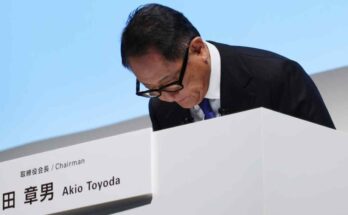Toyota which is known for producing reliable & trustworthy cars for the masses has produced some very great cars in the past in the premium segment of the market. One of those names is the Toyota Cresta which was introduced in 1980 and shared the chassis with the Mark II/ Cressida.
Related: What Does the Name of Your Car Mean?
“Cresta” originates from “crest” in Italian and Spanish, referring to a particular kind of helmet ornament. Blending performance and luxury, the Cresta was positioned below the Crown in the luxury market to avoid significant tax implications (higher-end cars from luxury brands pay greater taxes in Japan) and provide a more upmarket experience.
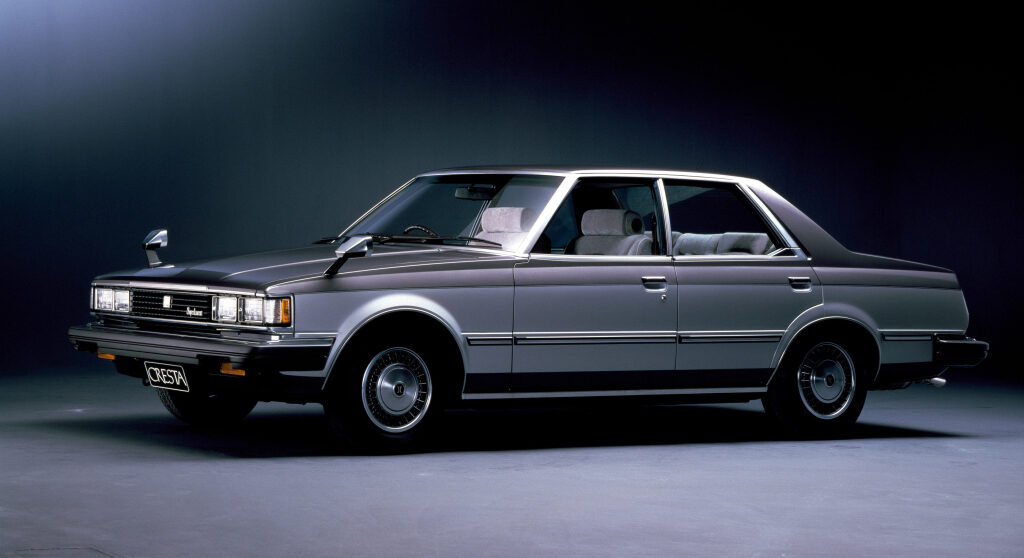
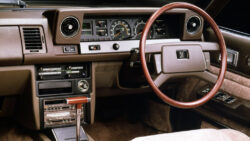
Toyota Cresta made its debut in April 1980, marking a significant milestone in Toyota’s history. It was conceived as a solution to offer luxury and comfort in a mid-size sedan, fitting seamlessly below the more traditionally luxurious Toyota Crown. Sharing a platform with the Toyota Mark II and Cressida, the Cresta maintained Toyota’s penchant for building multiple cars on one platform with variations in styling and powertrain to cater to different sets of consumers.

During the early 1980s, Toyota Cresta swiftly established itself as a noteworthy player in the luxury sedan market. The first generation X50/X60 series was known for its refined aesthetics, smooth driving experience, and a range of features that accentuated its luxury positioning. Even though the first generation was only manufactured from 1980 to 1984, those few years were successful because seeing the luxurious approach of the Cresta, chairman Eiji Toyoda started the F1 project, which ultimately resulted in the development of the iconic Lexus LS and resulted in the birth of the premium Lexus brand.
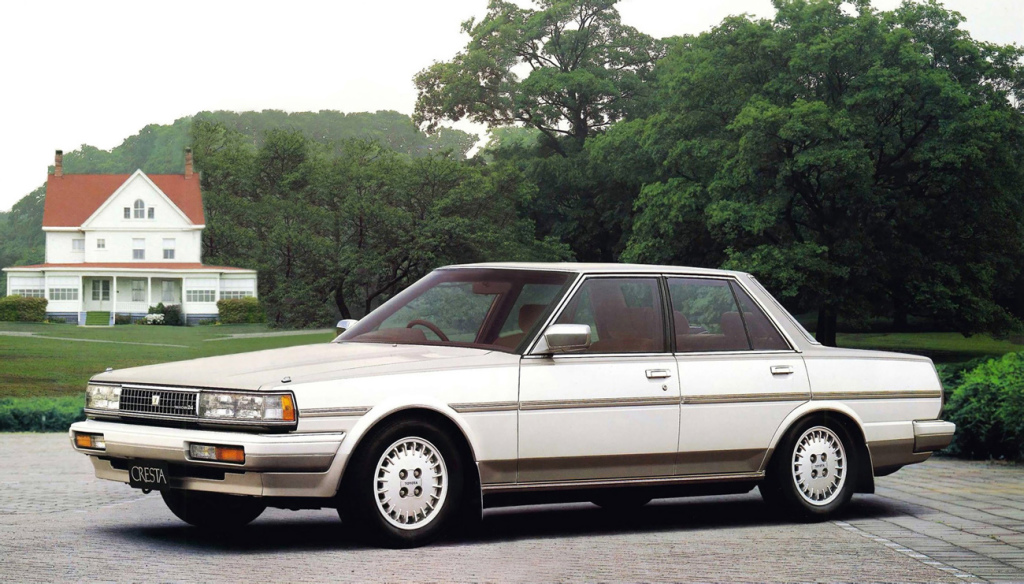
When the X70 generation Cresta was introduced in 1984, it demonstrated notable advances in both design and mechanics. The Cresta saw improvements in comfort and engine performance at this time, as well as a move toward a more contemporary and aerodynamic look. Notably, the Cresta’s reputation for providing a smooth and opulent driving experience was further enhanced by this generation. The most significant improvements were the addition of a twin-turbo engine option and the moving of the wing mirrors from the fenders to the doors.
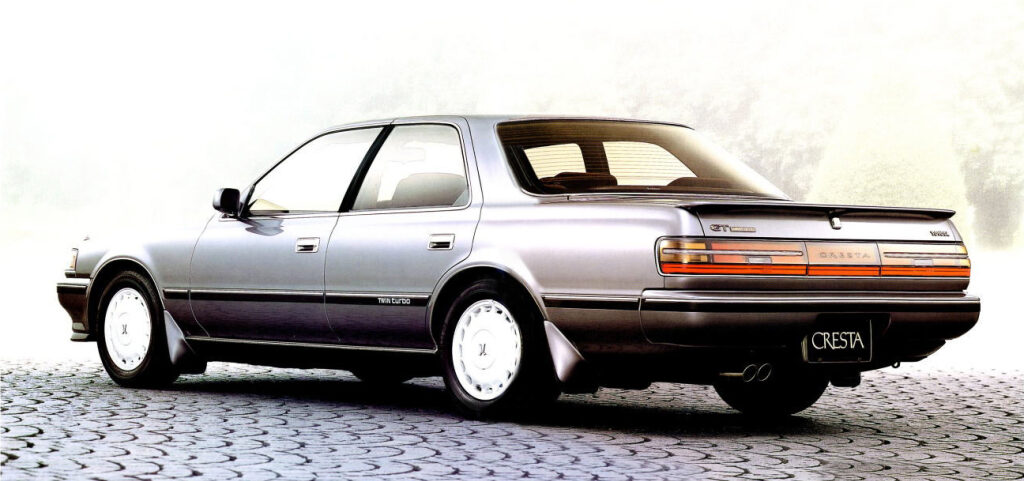
Then, the X80 generation arrived in 1988 with more rounded styling and also introduced the 1JZ engine family to the mix. Another engine option came in the form of the 3.0-liter inline-6 dubbed the 7M-GE, with this variant shipped globally and sold as the Cressida. These generations represented the Cresta’s continuous evolution. Each new series brought technological upgrades, more refined designs, and advanced safety features.

The X90 (1992-1996) and X100 (1996-2001) series reflected a shift towards a more contemporary look, aligning with the changing tastes and expectations of the consumers. But they also grew in size and became more closely aligned with the trims of the Mark II and Chaser. This dilemma was also encountered by Corona, which, as it grew in size, entered the league of the larger siblings and had to be discontinued, as did the Cresta.
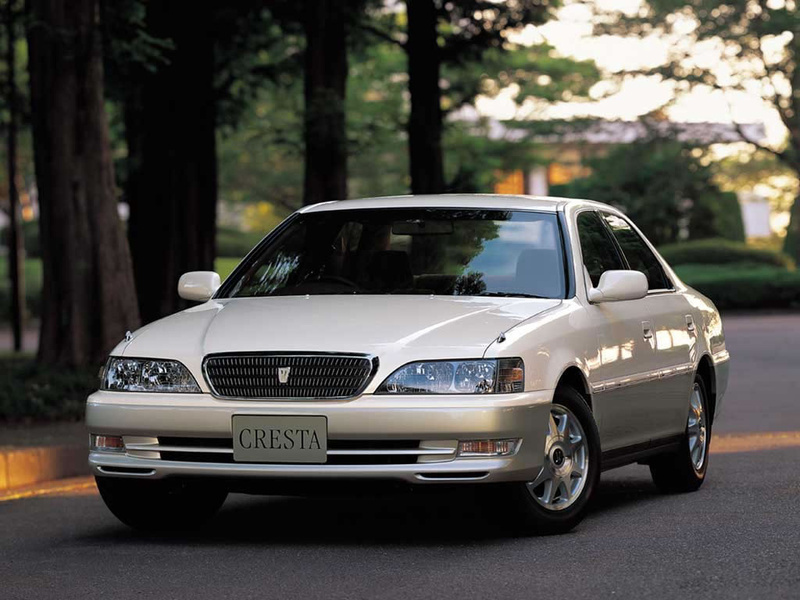
Production ceased in 2001, and the Cresta’s run as a standalone model ended with the arrival of the Toyota Verossa. The Verossa served as a successor, combining components of the Cresta with other Toyota models such as the Chaser (even continuing the generational designation as the X110). This changeover signaled the end of an era for the Cresta while also paving the way for future developments in Toyota’s luxury sedan sector, carrying the Cresta’s torch.
Related: Remembering the Toyota Verossa
However, in terms of sales, the Verossa in its home market, as well as export destinations, was considered a flop– primarily due to its unusual styling. Toyota Verossa also exceeded Japanese government regulations concerning external dimensions and engine displacement. Toyota sold 26,054 units of Verossan between June 2001 and April 2004 after which the production came to an end. Since Verossa was considered a torchbearer of Cresta’s heritage, its demise also brought an ultimate end to the legacy of Cresta.
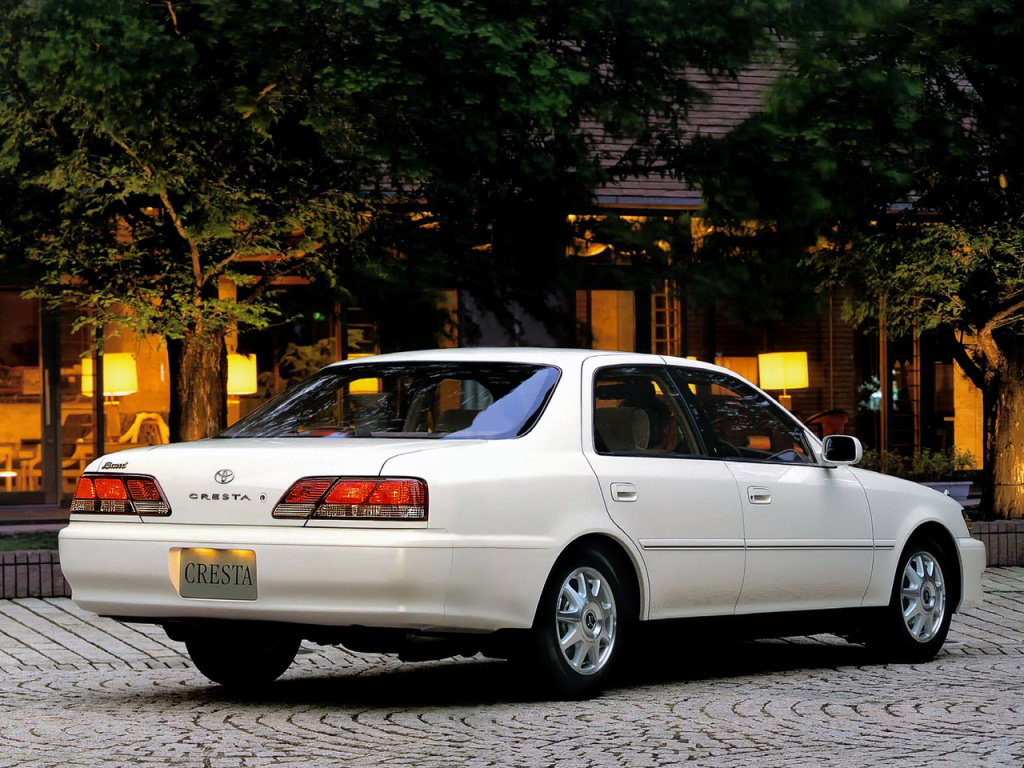

A computer animation professional with over 23 years of industry experience having served in leading organizations, TV channels & production facilities in Pakistan. An avid car enthusiast and petrolhead with an affection to deliver quality content to help shape opinions. Formerly written for PakWheels as well as major publications including Dawn. Founder of CarSpiritPK.com

